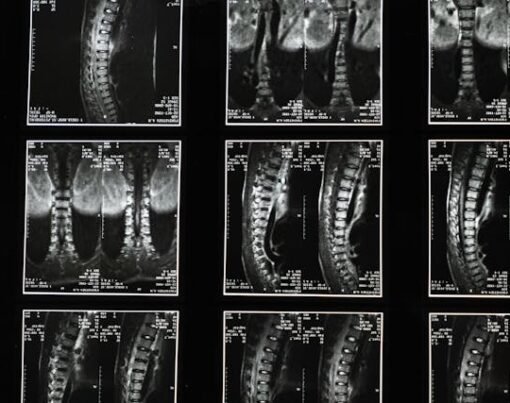Long-distance ambulance transport plays an elemental role in the healthcare system, assuring a lifeline to patients who require medical assistance far from their homes. Whether it’s for specialized medical care, transferring patients between healthcare facilities, or ensuring patients reach their preferred medical destinations, long-distance ambulance transport is a well-organized and essential service. Here, we will explore how long-distance ambulance transport works, the challenges it faces, and the destination of the professionals involved in providing this critical service.
Table of Contents
The Role of Long-Distance Ambulance Transport
A Long-distance ambulance transport company serves a diverse range of patients with unique medical needs. Some common scenarios where this service is required include:
1. Interfacility Transfers:
When a patient requires specialized medical care available only in a distant hospital, long-distance ambulances transfer them safely and efficiently.
2. Critical Care Transport:
Patients in critical condition may need specialized medical attention during transit. Critical care ambulances are equipped with advanced life support systems and skilled medical staff to ensure the patient’s stability throughout the journey.
3. Long-Distance Relocation:
Individuals with chronic or debilitating medical conditions may need to relocate to be closer to family or better healthcare facilities. Long-distance ambulances facilitate these moves, providing continuous medical supervision.
4. Medical Reparation:
Patients who fall ill sustain injuries while traveling abroad often require reparation to their home country for proper treatment. Long-distance ambulance services facilitate the safe return of these patients.
The process of Long-Distance Ambulance Transport
The process of long-distance ambulance transport is comprehensive and begins with careful planning and coordination:
1. Assessment:
Before initiating transport, medical professionals evaluate the patient’s condition and determine the appropriate level of care needed during the journey.
2. Planning:
A specialized medical team plans the route, taking into account the distance, terrain, weather conditions, and any potential medical facilities along the way.
3. Ambulance Selection:
Depending on the patient’s medical needs, an appropriate ambulance equipped with the necessary equipment is selected for the journey.
4. Medical Team:
Trained medical professionals, including paramedics and nurses, accompany the patient throughout the transport, assuring continuous medical care.
5. Equipment and Medications:
The ambulance is stocked with essential medical equipment and medications tailored to the patient’s condition to address any emergencies en route.
6. Communication:
The medical team maintains constant communication with receiving healthcare facility, updating them on the patient’s condition and estimated arrival time.
Challenges and Safety Measures of long-distance ambulance transport
Challenges:
- Patient Stability: Patients being transported over long distances often have complex medical conditions and their stability during the journey is of utmost importance. Any fluctuations in their health could lead to critical situations. The constant monitoring of vital signs and specialized medical equipment onboard help maintain patient stability.
- Medical Emergencies: Patients undergoing long-distance ambulance transport might experience sudden medical emergencies en route. The medical team must be prepared to handle such situations promptly and efficiently. Properly trained personnel, advanced life support equipment, and well-defined emergency protocols are essential for managing unexpected medical events.
- Distance and Time: Long journeys can be physically and mentally challenging for both patients and medical staff. The prolonged exposure to movement, vibrations, and nose inside the ambulance can lead to fatigue and stress. Ensuring adequate rest breaks, regular shift rotations for medical personnel, and proper patient positioning are essential to mitigate these challenges.
- Adverse Weather Conditions and Traffic: Weather conditions and traffic congestion can significantly impact travel times, potentially delaying the patient’s arrival at their destination. Ambulance crews must closely monitor weather forecasts and have alternative routes planned in case of road closures or traffic jams.
Safety Measures:
- Specialized Medical Team: Long-distance ambulance transport requires a highly trained and experienced medical team. Paramedics, nurses, and other medical professionals who are well-versed in handling critical patients and emergencies are deployed to accompany the patient throughout the journey.
- Advanced Life Support Equipment: Ambulances used for long-distance transport are equipped with advanced life support systems. These comprehend cardiac monitors, ventilators, defibrillators, and other essential medical equipment to ensure immediate medical intervention if needed.
- Tailored Patient Care: Each patient’s medical condition is unique, and their transport requires customized care plans. Medical teams carefully assess the patient’s needs and create individualized treatment protocols for the journey.
How to find the right long-distance ambulance transport?
1. Assess Patient’s Needs:
Before searching for an ambulance transport service, assess the patient’s medical condition and specific needs. Determine whether the patient requires basic medical support or critical care during the journey. This will aid narrow down your options based on the level of medical care required.
2. Seek Medical Advice:
Consult the patient’s healthcare provider or medical team to get their input on the best mode of transportation for the patient. They can offer valuable insights and recommend specific services that rank with the patient’s medical requirements.
3. Research Local Providers:
Start by researching local long-distance ambulance transport providers. Look for companies that have a track record of providing reliable and professional services. Check their websites for information about their fleet, medical staff, certifications, and types of services offered.










